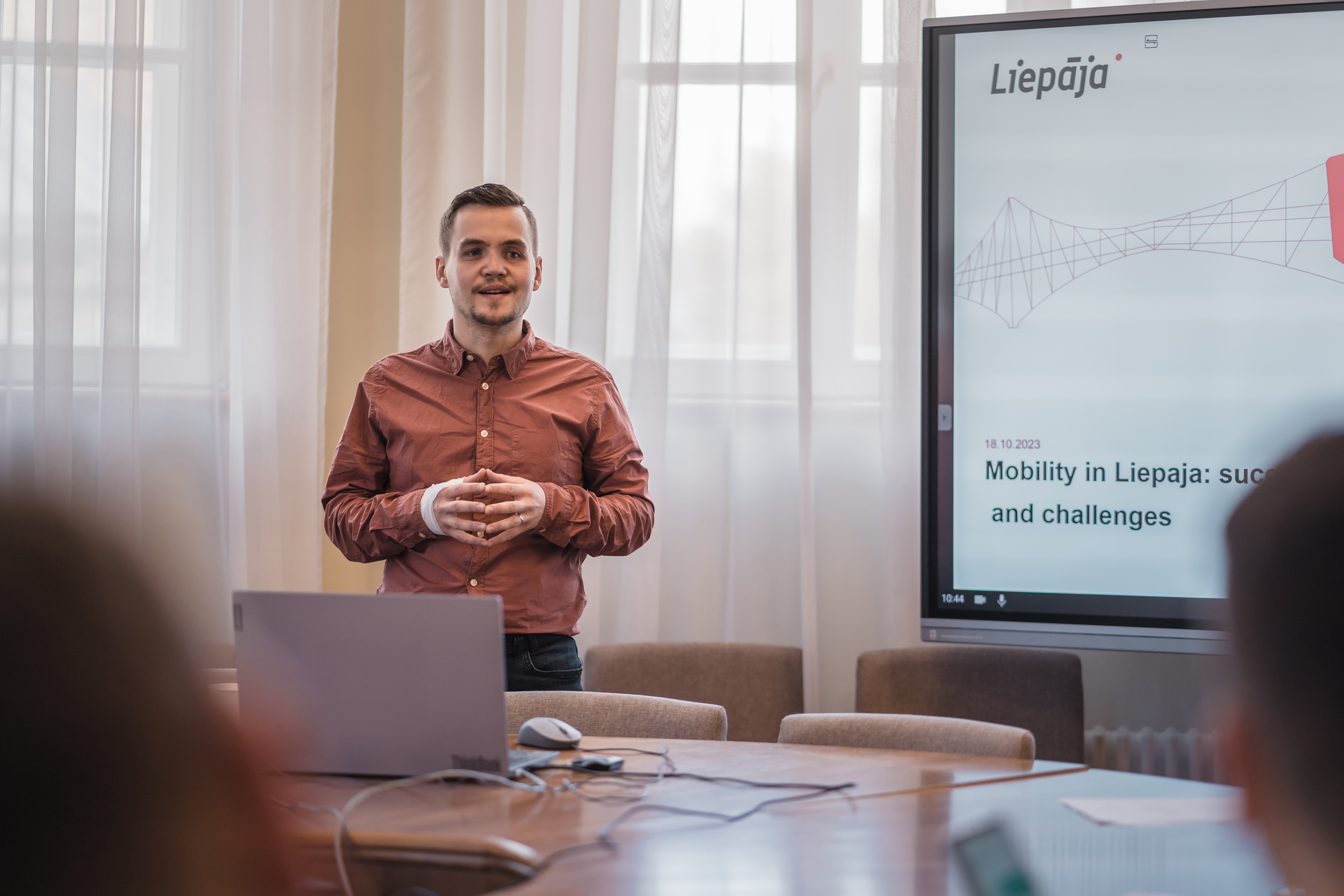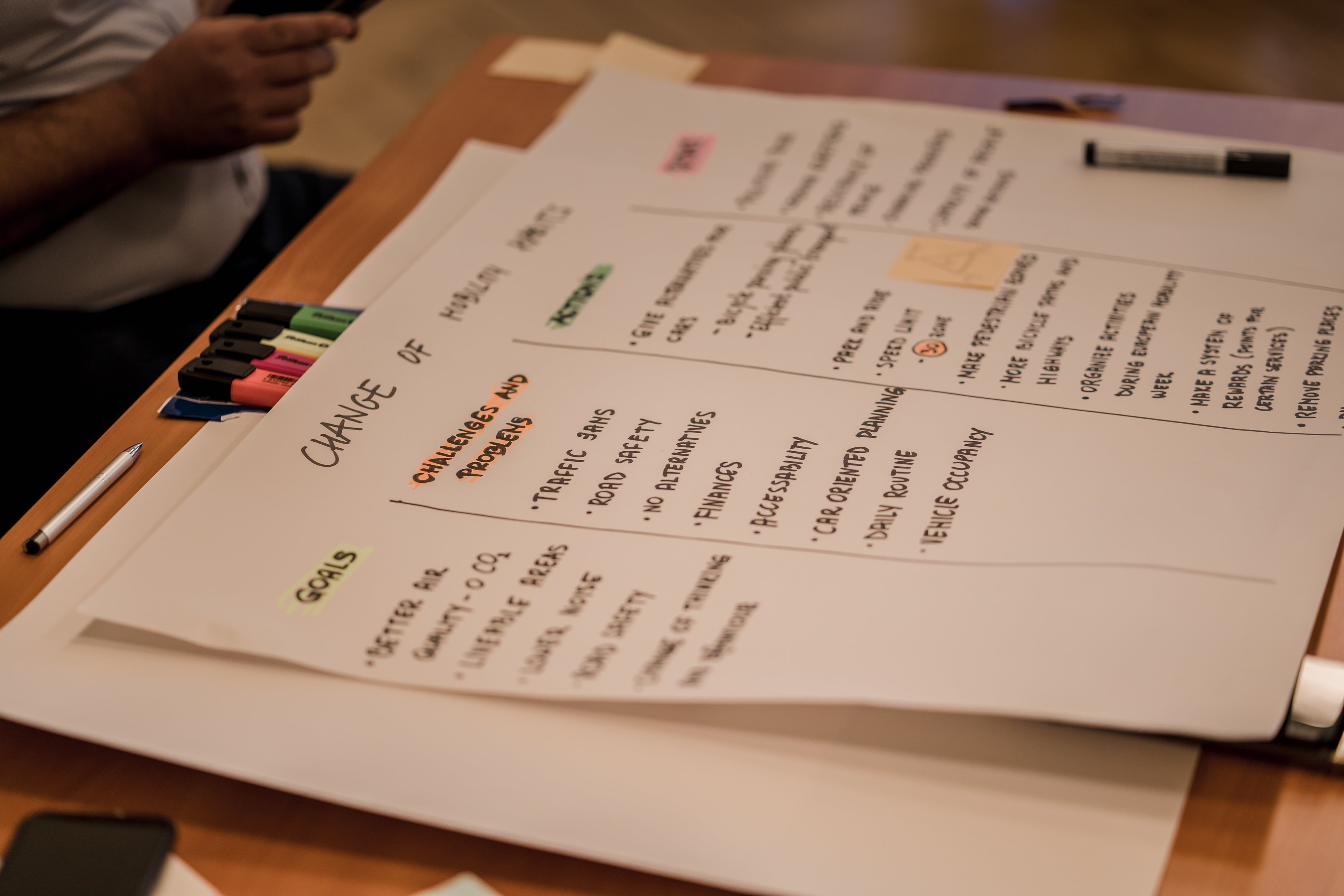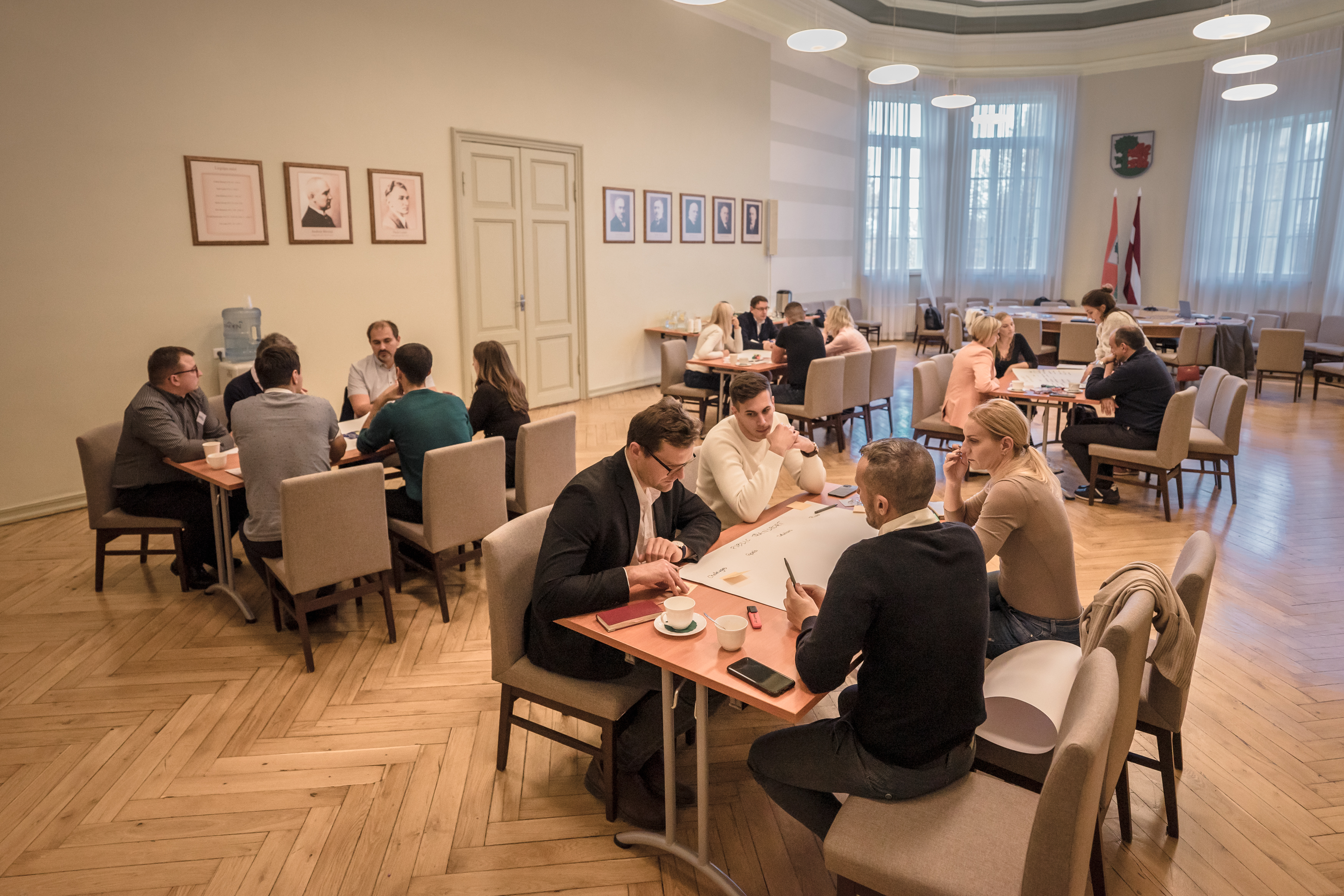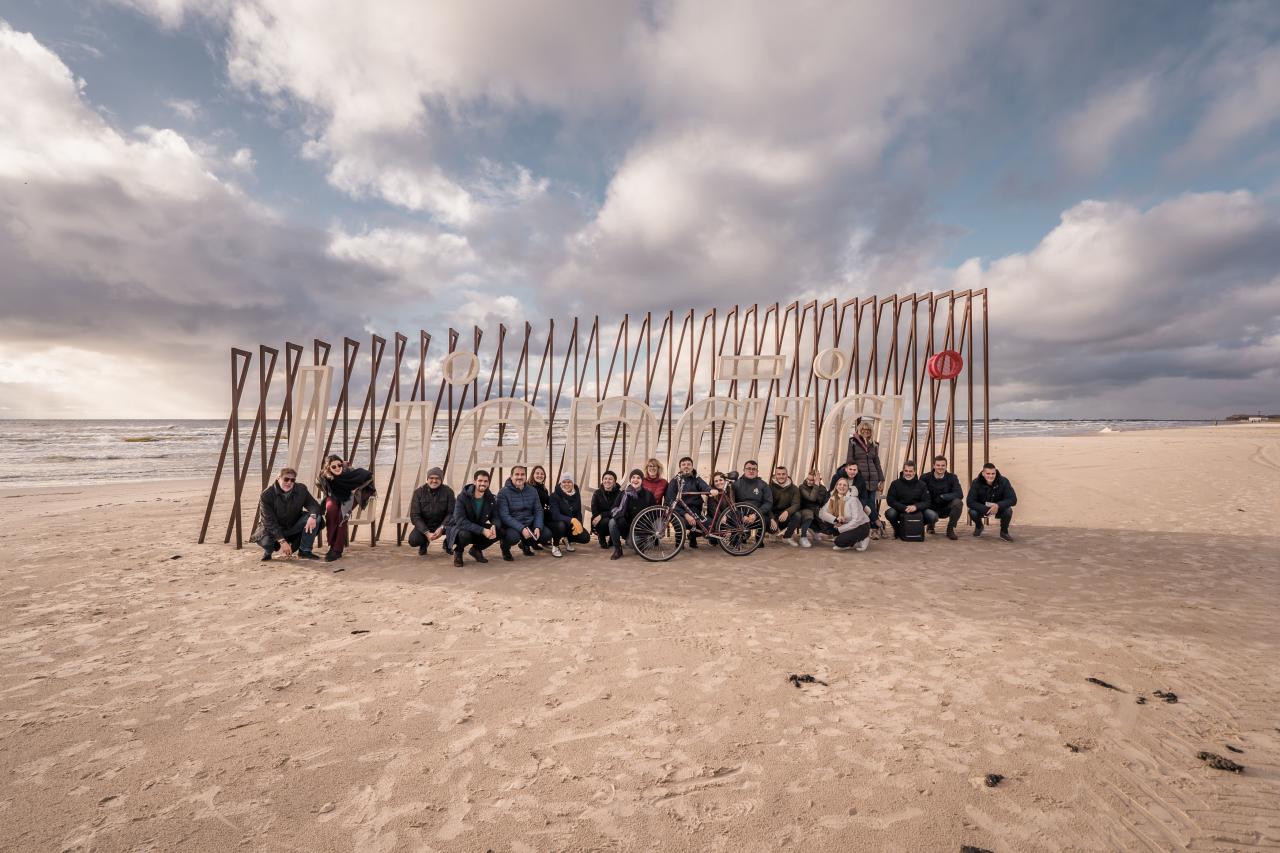The genesis of this ambitious initiative can be traced back to Aksels Ruperts from the Municipality of Liepaja in Latvia. Fuelled by a passion for international collaboration and a fervent desire to deepen his expertise in mobility solutions, Aksels embarked on a mission. His aspiration? To draft a compelling project proposal that would pave the way for Liepaja to craft an innovative Sustainable Urban Mobility Plan. In early 2023, Aksels took a significant stride by engaging in the call for proposals within the esteemed URBACT programme. Amidst fierce competition, with more than 25 applications pouring in from diverse European cities, the project garnered immense interest. But only nine projects could be selected.
“At the end of the day it led to completed project partnership and a 67 page project application. Honestly, I was not 100% sure that the project would be approved, because at that time I had minimal project management experience and my expertise was in a different field. There is a saying that you have to be careful what you wish for, because wishes tend to come true. So on the afternoon of 31 May I received the news that the project has been approved and Liepaja will be the lead partner”, Aksels said.

In the unfolding narrative of June 2023, commenced the captivating journey of a consortium comprising nine partners hailing from eight European nations.
The ensemble of collaborators embarking on the ambitious PUMA project includes a diverse array of entities: the Liepaja City Municipality Administration and Dienvidkurzeme Municipality from Latvia; Public Institution “Žaliasis regionas” from Lithuania; Development Organisation of Municipality of Larissa – OLON SA from Greece; the University of Zagreb, Faculty of Transport and Traffic Sciences from the Republic of Croatia; Gdansk Roads and Green Areas Administration from Poland; Municipality of Cento from Italy; Viladecans City Council from Spain; and the Regional Development Agency of Northern Primorska ltd. from Slovenia.
So what exactly is the PUMA project about?
Urban areas face an ever-growing challenge: how to facilitate efficient, environmentally friendly, and accessible transportation for their residents while mitigating congestion and pollution. The aim of PUMA is to develop Integrated Mobility Action Plans based on the URBACT methodology and guidelines for developing Sustainable Urban Mobility Plans (SUMPs).
SUMPs are visionary roadmaps that cities and regions adopt to revolutionize their transportation systems. They prioritize sustainability by integrating various modes of transit - such as walking, cycling, public transport, and innovative technologies - into cohesive networks. By placing emphasis on inclusivity, environmental impact, and efficiency, SUMPs aim to reshape urban landscapes, fostering healthier, more liveable communities while paving the way for a greener and more connected future.
At its core, SUMP revolves around people. It's a comprehensive approach that prioritizes the needs and well-being of individuals within urban environments. SUMPs aim to create transportation systems that are accessible, safe, and convenient for all residents, regardless of their age, abilities, or socioeconomic status. By placing people at the centre, SUMPs focus on enhancing quality of life, promoting healthier lifestyles, and fostering social inclusion by ensuring that transportation options are not only sustainable but also user-friendly and equitable for everyone in the community.
Creating living documents is crucial for the success and sustainability of any project. The primary aim is not just to produce static papers but to cultivate dynamic resources that evolve alongside the project's progress. These living documents serve as adaptable roadmaps, continuously updated to reflect changing circumstances, emerging insights, and evolving goals. By being alive, these documents remain relevant, responsive, and valuable tools for guiding decision-making processes, ensuring alignment with current trends, technologies, and community needs. Their dynamic nature fosters engagement, encourages collaboration, and enables stakeholders to contribute meaningfully, ultimately enhancing the project's effectiveness and longevity.

Who are We and where are we today as a network?
Liepaja, nestled in Latvia's western region of Kurzeme along the Baltic Sea, stands as the country's third-largest city, home to nearly 70,000 people. The city has made significant strides in reducing CO2 emissions by 46% since 2006. However, the transport sector has seen a concerning spike of 29% in greenhouse gas emissions, constituting over half of the total emissions. Efforts towards sustainable transportation in Liepaja include the introduction of low-floor trams, cycle paths, aånd a modern public transport payment system. Despite these initiatives, they fall short of meeting the ambitious EU climate goal of at least a 55% decrease in GHG emissions. The city's next major focus, as part of the "100 Climate Neutral and Smart Cities" mission, involves crafting an Integrated Mobility Action Plan alongside various infrastructure projects.
Dienvidkurzeme, a newly formed municipality post a 2021 administrative territorial reform, closely collaborates with Liepaja. The region faces challenges in ensuring equal mobility opportunities for its residents. The lack of public transport connectivity outside urban centers forces many to rely on personal vehicles, highlighting the need for improved accessibility.
In the Taurage region of Lithuania, represented by the Public Institution "Žaliasis regionas," efforts are directed toward curbing high private car usage. Initiatives include implementing a common e-ticket system, establishing new regional public transport routes, and acquiring electric buses. However, a comprehensive long-term strategy is imperative to achieve an efficient, popular, and climate-neutral public transport system in the region.
Larissa, the capital of Greece's Thessaly region, boasts a diverse landscape hosting public organizations, educational institutions, and a bustling commercial infrastructure. The city stands as a pioneer in Greece, implementing a Sustainable Urban Mobility Plan (SUMP) and prioritizing bicycle/pedestrian connections for better urban accessibility.
The Faculty of Transport and Traffic Sciences at the University of Zagreb holds a prestigious position in Croatia, engaging in national, regional, and international projects to address transportation challenges. The faculty emphasizes international collaboration for academic exchange and research initiatives.
Gdansk, Poland's principal seaport, leads the charge in sustainable urban mobility policies. The city has introduced various initiatives aligned with the Sustainable Urban Mobility 2030 plan, focusing on modern, eco-friendly practices. Efforts are underway to prepare a regional SUMP for the Gdansk-Gdynia-Sopot Metropolitan Area.
Cento, situated amidst Italy's important cities, faces challenges stemming from heavy private car usage due to a lack of widespread public transportation. The municipality is aligning itself with European green initiatives, emphasizing an integrated and multidisciplinary approach to create a sustainable urban mobility system.
Viladecans, part of the Barcelona Metropolitan Area, emphasizes aligning urban mobility strategies with international agendas such as the UN 2030 agenda. With mobility contributing to a significant portion of CO2 emissions, the city aims to update its mobility plan to achieve climate neutrality by 2030.
Nova Gorica, Slovenia, strategically prioritizes sustainable mobility in its SUMP 2030 plan. The city focuses on reducing carbon footprints by enhancing transportation systems and addressing the needs of vulnerable populations, aiming for a more inclusive and sustainable urban landscape.
Each partner brings forth a distinct and invaluable contribution—be it the rich academic expertise of the University of Zagreb, the pioneering endeavors in pedestrian zone implementation showcased by Larissa, the astute crafting of cycling policies exhibited by Gdansk, groundbreaking innovations in public transport witnessed in Taurages, the fervent commitment to green transformation activities exemplified by Viladecans, the dedicated involvement in advocating for equality among women and immigrants demonstrated by Cento, the adeptness in fostering international cooperation across various spheres shown by Nova Gorica, or the unwavering dedication towards creating resident-centric environments displayed by Liepaja and Dienvidkurzeme. Each partner city possesses a unique reservoir of knowledge, experiences, and initiatives that collectively enrich and bolster the collaborative efforts within the PUMA project, promising a wealth of shared insights and transformative advancements in urban mobility strategies. An intense period is behind us - the time of expert visits and the first international meeting. The first transnational meeting took place From 16th to 19th October in Liepāja and Grobiņa.
The mood after the first meeting was fantastic and Lead partner Aksels summed it up as follows: “Now I am confident that the right partners have been selected. Each partner has its own positive and negative experiences to share, and a vision for transport development on local and broader level. I also hope that this project will help to introduce new planning methods, promote public participation in planning processes and a sense that we can all plan our city together. At the end of the day, the abbreviation PUMA fits the essence of the project and mobility quite well. Mobility is not about something aggressive and predatory, but it is about how to deliver people and goods from A to B in a fast and accurate way”.

It was a meeting of people who believe in change, people committed to their work and proud of their cities and areas. Committed public administration workers are the backbone of effective governance and the driving force behind transformative change within communities.
These dedicated individuals tirelessly strive to enhance the quality of life for residents by embracing innovative solutions, implementing forward-thinking policies, and actively engaging with the needs of the community. Whether they are urban planners, transportation engineers, policymakers, or public service personnel, their commitment shines through in their relentless pursuit of creating sustainable and inclusive urban environments. Their passion fuels the translation of visionary concepts like SUMPs into actionable strategies, fostering collaboration, innovation, and ultimately, the realization of thriving, accessible, and environmentally conscious cities for generations to come. Following numerous visits and extensive meetings, it is unequivocally evident that these individuals stand as the esteemed representatives of the partner cities within the ambit of the PUMA project.
What lies ahead our network?
As a project network embarks on creating Integrated Mobility Action Plans, several key elements lie ahead in the journey towards successful planning and implementation:


